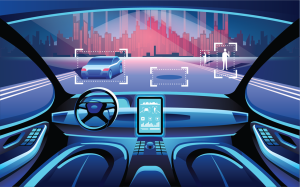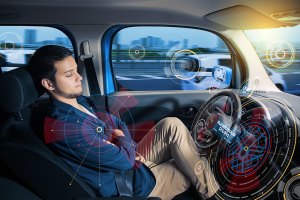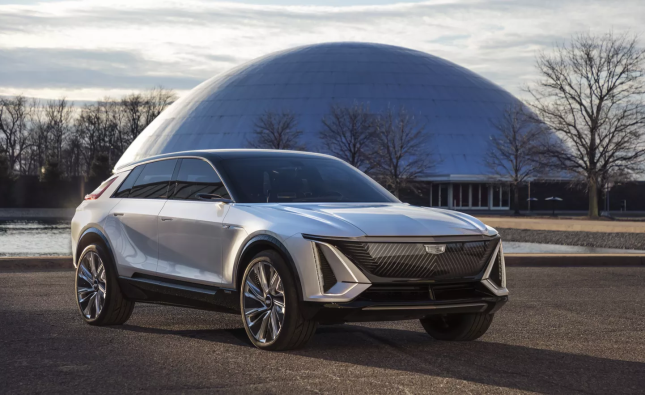
Introduction
Self-driving cars are no longer science fiction. By 2025, many vehicles on the road include some level of automation. To make sense of these capabilities, experts use the SAE scale of autonomous driving levels from 0 to 5. Level 0 has no automation, while Level 5 promises full self-driving in any condition. Understanding these levels helps buyers choose the right car and use features safely. This article explains each level in simple terms, covers current real-world examples, and offers best practices for drivers. You will learn how far the technology has come, what to expect in the near future, and how to stay safe as cars gain more control on our roads.
What Are Autonomous Driving Levels?

Autonomous driving levels define how much control the vehicle’s systems have over driving tasks. The Society of Automotive Engineers (SAE) created the scale to standardize terms across automakers and regulators. Each level adds more automation while reducing the driver’s active role.
The Purpose of the SAE Scale
By classifying automation, manufacturers can market features clearly. Regulators can set rules for testing and deployment. Drivers know exactly what each system can and cannot do. This shared language prevents confusion that once led to misuse of partially automated features.
Levels vs. Brand Names
Automakers often use catchy names like “Autopilot” or “ProPILOT Assist.” These are marketing terms and may not match the exact SAE level. Always check the SAE rating to know if the car steers, brakes, or accelerates itself, or simply assists the driver.
Level 0: No Automation
Level 0 means the human driver does everything. No self-steering, no cruise control. All acceleration, braking, and steering rely on the driver.
Key Characteristics
The vehicle may have warnings or momentary assist features, like blind-spot alerts or collision warnings. But it does not control the car in any way. The driver must always watch the road and react to events.
Real-World Examples
Most older cars and some budget models today are Level 0. They might include basic stability control and traction control systems but offer no steering or speed control assistance.
Level 1: Driver Assistance

At Level 1, the car offers a single automated function. Either steering or acceleration/braking is automated, not both at the same time.
Key Characteristics
Common Level 1 features include adaptive cruise control or lane keeping assist. In adaptive cruise control, the car maintains speed and distance but the driver steers. In lane keeping assist, the car gently corrects its position in the lane but the driver controls speed.
Real-World Examples
Many modern cars include adaptive cruise control. A driver may set speed on the highway, and the car slows automatically if traffic ahead slows. The driver still steers, watches mirrors, and handles all other tasks.
Level 2: Partial Automation
Level 2 systems can steer and control speed simultaneously under certain conditions. The driver must supervise at all times.
Key Characteristics
The car uses cameras, radar, and sensors to stay in the lane and follow traffic. But the driver must keep hands on the wheel and eyes on the road. The system can handle straight-line driving, mild curves, and stop-and-go, but not complex conditions.
Real-World Examples
Tesla Autopilot, GM Super Cruise, and Mercedes-Benz Drive Pilot are Level 2. They allow hands-on-wheel semi-autonomous highway driving. If the driver removes hands or ignores prompts, the system issues alerts and eventually disengages.
Level 3: Conditional Automation

Level 3 steps in when conditions are ideal. The car manages all driving tasks within a defined scenario. The driver can divert attention but must be ready to take over.
Key Characteristics
Commonly called “eyes off” automation. The car can handle highway driving, manage speed, lane changes, and braking. If weather or road conditions exceed the system’s limits—like heavy rain—the car requests the driver to resume control.
Real-World Examples
In 2025, very few cars offer true Level 3. Some models from Audi and Honda have tested systems that allow drivers to read or watch media while the car drives itself on highways. However, legal and safety challenges slow broad adoption.
Level 4: High Automation
Level 4 vehicles drive themselves in most conditions without driver input. They operate in a specific geofenced area or under certain weather and traffic conditions.
Key Characteristics
No driver attention is needed when the system is active. If the car leaves its operational design domain—like leaving a mapped city area—it pulls over safely and alerts the occupant.
Real-World Examples
Robotaxi services in select cities use Level 4 vehicles. Companies like Waymo and Cruise deploy self-driving taxis that run predefined routes in controlled urban zones. They can handle busy streets, intersections, and even complex traffic, but only within their service area.
Level 5: Full Automation
Level 5 is full self-driving anywhere and anytime. The occupant becomes a passenger only. No pedals or steering wheel are needed.
Key Characteristics
The system manages every aspect of driving in all weather, roads, and conditions. Vehicles may look completely different since no human control interface is required. Level 5 represents the ultimate goal of autonomous vehicle research.
Real-World Outlook
As of 2025, Level 5 remains in testing. Technical challenges like extreme weather, mixed traffic, and ethical decision-making keep full automation years away. Regulators and safety standards must also evolve before widespread deployment.
Table: Autonomous Driving Levels at a Glance
| Level | Automation | Driver Role | Example Features | Real-World Status |
|---|---|---|---|---|
| 0 | None | Full control | Basic warnings | Most older cars |
| 1 | Steering OR speed | Must supervise | Adaptive cruise OR lane assist | Entry and mid-level cars |
| 2 | Steering AND speed | Hands on, eyes on | Tesla Autopilot, GM Super Cruise | Many high-end models |
| 3 | Conditional driving | Ready to take over | Audi Traffic Jam Pilot (limited) | Pilot deployments |
| 4 | High automation | Passenger in zone | Waymo, Cruise robotaxis | Select urban areas |
| 5 | Full automation | No driver needed | Future fully driverless | R&D, years away |
Best Practices for Drivers in 2025
Even with advanced systems, drivers must adopt safe habits to avoid misuse and accidents.
Understand Your System’s Limits
Read the owner’s manual and manufacturer guidelines. Know if your car’s system is Level 1, 2, or 3. Never assume it can handle more than advertised. Misusing a Level 2 system on complex roads can lead to crashes.
Stay Alert and Ready to Intervene
For Levels 1 and 2, keep hands on the wheel and eyes on the road. For Level 3, avoid fully disengaging: even if you read a text, keep an eye out and be ready to take over within seconds.
Monitor System Alerts
Modern cars flash visual warnings, play sounds, or vibrate the steering wheel if they detect driver inattention. Do not ignore these alerts. Always respond immediately to ensure safety.
Combine Tech with Safe Driving Habits
Maintain safe following distances and proper speeds, even on autopilot. Check mirrors and blind spots before changing lanes. Use turn signals. Treat automation as a powerful assistant, not a perfect replacement for skill.
The Future of Autonomous Driving

The path to Level 5 involves technology advances and policy changes.
Improved Sensors and AI
Next-generation LiDAR, radar, and cameras will provide clearer 3D maps and object detection. AI models will learn rare scenarios, like unusual roadworks or unpredictable pedestrians.
Vehicle-to-Everything (V2X) Communication
Cars will talk to each other, traffic lights, and infrastructure for smoother traffic flow. V2X reduces reaction times and prevents accidents by sharing data on hazards ahead.
Evolving Regulations and Standards
Governments are updating rules for testing and deploying self-driving cars. New safety standards and liability laws will shape how autonomous vehicles enter the market.
Shared Autonomous Fleets
Ride-hailing and delivery fleets of Level 4 vehicles will become more common. Shared fleets reduce personal car ownership, ease congestion, and lower emissions in cities.
Conclusion
By 2025, autonomous driving levels 0 to 5 define the spectrum of self-driving features. Level 0 starts with no automation, Level 2 offers hands-on-wheel assistance, and Level 3 brings conditional “eyes off” driving. Level 4 robo taxis appear in select cities, while Level 5 full automation remains on the horizon. Understanding each level helps you pick the right car and use its features responsibly. Always stay ready to take over, know system limits, and follow safety alerts. As sensors, AI, and regulations advance, self-driving cars will reshape how we travel, making roads safer and commutes more efficient. The future of driving is automating itself—get ready to ride along.
Call-to-Action
Curious about self-driving features? Test drive a Level 2–equipped model and experience driver assistance today. Stay informed, drive safely, and join the autonomous driving revolution!









